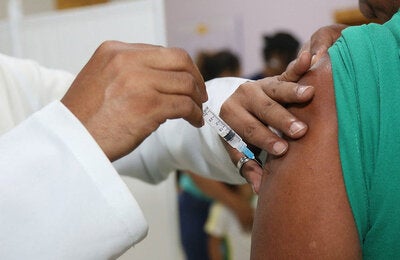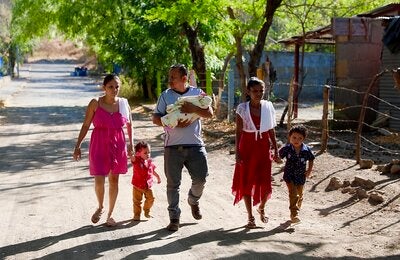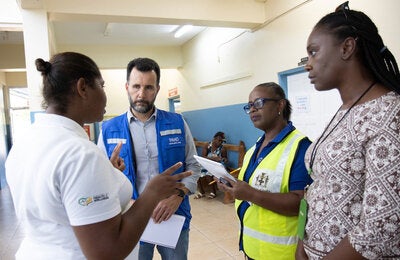
Washington D.C. April 23, 2025 (PAHO) – The continued circulation of the avian influenza A(H5N1) virus in the Americas and the record of human infections have generated the need to strengthen clinical preparedness and response. To this end, the Pan American Health Organization (PAHO) held a webinar focused on sharing experiences and practical recommendations on the initial clinical approach, the identification of severity factors, the management of complications and the critical care of patients with severe cases, aimed especially at the countries of Latin America and the Caribbean.
Opening and Context
The event was opened by Andrea Vicari Head of PAHO’s Infectious Hazard Management Unit, who highlighted the importance of timely and optimal clinical management to save lives during public health emergencies. Vicari emphasized that the severity of infection can vary among age groups and highlighted the need to strengthen health services to optimize the clinical response to cases of zoonotic influenza.
Updated Clinical Recommendations
Sebastian Ugarte, member of the SARInet plus clinical management group, presented the new WHO guidelines for the clinical management of zoonotic influenza, published in 2024. Ugarte explained the clinical decision algorithm to establish treatment for severe patients or, if applicable, post-exposure prophylaxis in at-risk individuals. He stressed the importance of early diagnosis and timely administration of antivirals such as oseltamivir or baloxavir in high-risk populations.
The risk factors for progression to severe disease, the rational use of antibiotics only in cases of bacterial superinfection and the contraindication of corticosteroids in most cases of avian influenza were also discussed.
Pediatric Clinical Management and Critical Care
Lorena Acevedo, specialist in pediatric clinical management and member of the SARInet plus clinical group, presented the approach to critical pediatric cases of avian influenza including clinical manifestations, early recognition of warning signs, strategies for staged oxygen therapy, criteria for the use of invasive mechanical ventilation, and recommendations for hemodynamic resuscitation. She emphasized the importance of appropriate triage and differentiated management of children at risk for severe influenza illness and shock.
Principles of Adult Clinical Management
Thiago Lisboa, SARInet plus clinical expert, summarized the essential principles for the management of critically ill adult patients: early identification, early empirical antiviral treatment, optimization of oxygenation, application of protective lung ventilation and timely notification to health authorities of suspected cases of zoonotic influenza.
Lisboa also emphasized the importance of not delaying intubation when indicated and the need to consider extracorporeal support (ECMO) in cases of refractory respiratory failure.
First cases of Avian Influenza A(H5N1) in Latin America
Finally, intensivists who treated the first cases of avian influenza A(H5N1) in Chile (Dr. Yocelin Castillo), Ecuador (Dr. Frances Fuenmayor) and Mexico (Dr. Gabriela Alvarado Jiménez), shared their experiences in comprehensive care. The panelists described clinical challenges, management strategies implemented and lessons learned, enriching the seminar with real perspectives and practical recommendations.
Brief description of the cases
Case 1 – Chile
Finally, intensivists who treated the first cases of avian influenza A(H5N1) in Chile (Dr. Yocelin Castillo), Ecuador (Dr. Frances Fuenmayor) and Mexico (Dr. Gabriela Alvarado Jiménez), shared their experiences in comprehensive care. The panelists described clinical challenges, management strategies implemented and lessons learned, enriching the seminar with real perspectives and practical recommendations.
Case 2 – Ecuador
A girl was admitted for prolonged febrile illness with systemic symptoms and respiratory complications that rapidly worsened. She was hospitalized and, after intensive management including mechanical ventilation for 22 days, she evolved favorably and was discharged after 45 days of hospitalization.
Case 3 – Mexico
Young girl with onset of febrile and respiratory symptoms in a rural setting. She received primary care, but due to worsening she was transferred to a general hospital and later to a pediatric intensive care unit. Despite antiviral treatment and ventilatory support, the patient presented progressive deterioration and died.
Table. Comparison of clinical cases, presentation and management
| Feature | Case 1 | Case 2 | Case 3 |
|---|---|---|---|
| Age | 53 years old | 9 years | 3 years |
| Country | Chile | Ecuador | Mexico |
| Initial point of care | First level hospital | Area hospital | Community care |
| Clinical course | Rapid respiratory deterioration | Systemic and neurological progression | Torpid and fulminant evolution |
| Key interventions | Prone, ECMO | Mechanical ventilation | Mechanical ventilation |
| Approximate driving | 86 days | 45 days | 26 days |
| Result | Hospital discharge | Hospital discharge | Death |
Conclusion of the sesión
The session concluded with a message from Dr. Angel Rodriguez, PAHO Regional Clinical Management Advisor, who emphasized to countries the priority of updating and adapting national clinical management guidelines for severe acute respiratory infections, including those caused by avian influenza A/H5N1.
Key documents and updated clinical guidelines on the management of avian influenza A(H5N1):
Clinical care of severe acute respiratory infections – Tool kit



